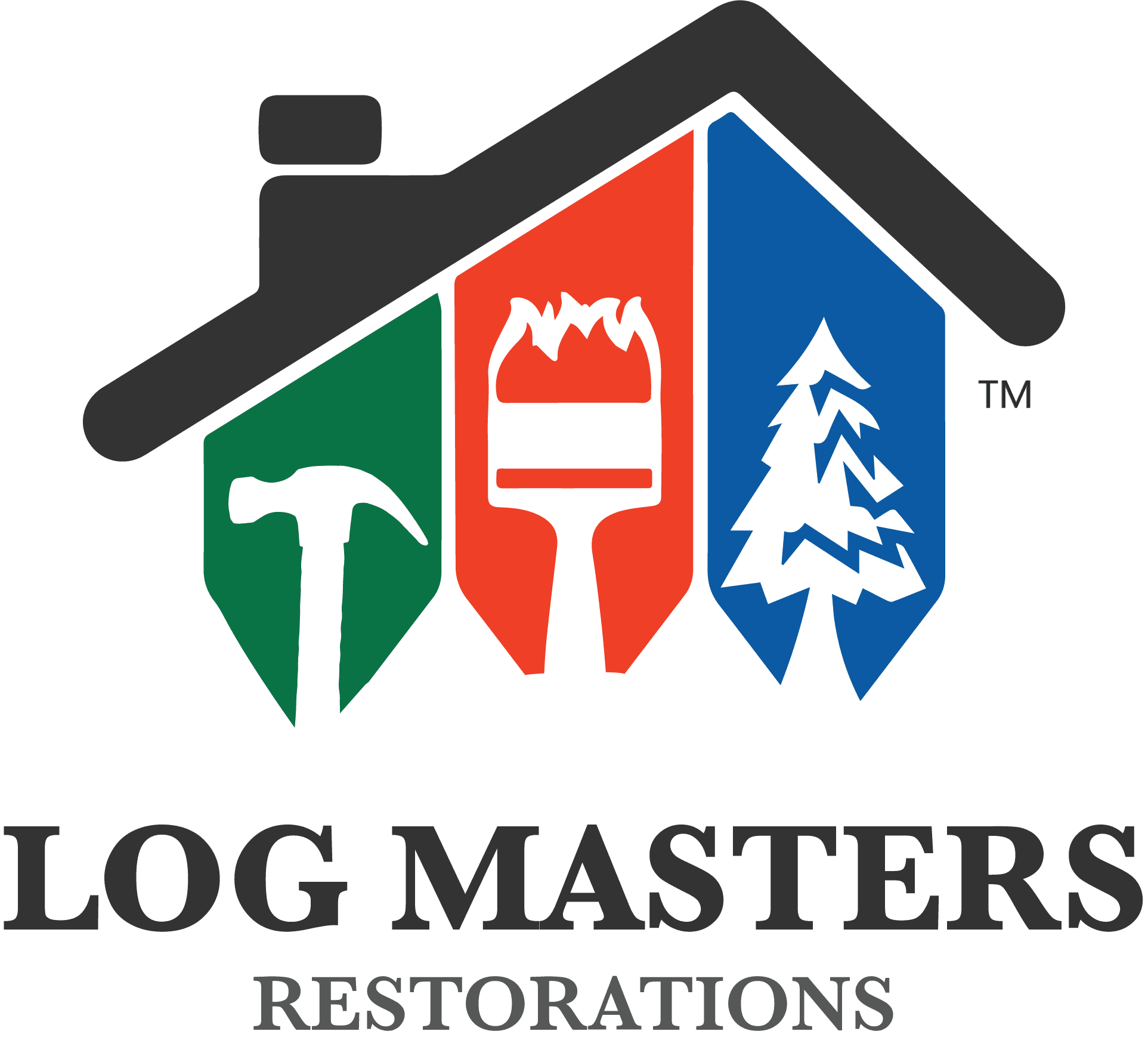Log Repair/Replacement
Log Rot Repair & Replacement Services
Details

Overview
Log Rot Repair & Replacement Services
Have you noticed damaged or rotting logs on your log home that likely need to be repaired or replaced? If so, Log Masters Restorations would love to earn your business. The cost of our log repair and replacement services depends on your specific situation and what type of logs were used to build your home. As you can see below, there are many different log styles, and prices vary widely.

The Log Masters Restorations team is well versed in log rot repair and replacement projects, and you can count on our experienced specialists for high-quality work. Read on to learn how our trained professionals remove, repair and replace rotten logs that can ruin your log home’s beautiful look and lead to serious structural damage. Contact us today to discuss the details of your project and request a free estimate.
Description
What Is Log Rot Repair?
Log rot can sound scary. A vital part of your log home is deteriorating, and you need to know how badly. Log Masters Restorations deals in facts, not fear. Our crews are trained to hunt down problem areas and get them repaired immediately. We’ll find the culprit—usually fungus—and then hatch a plan for the best fix. Our experts will cut the affected area out and replace it with a half or full log, depending on the severity, and seal it to prevent any further issues. Nothing is too big or too small for Log Masters Restorations when it comes to log rot repair!
Uses
When Do Logs Need to Be Repaired or Replaced?
As we noted above, there are several types of fungi that can lead to log rot. There are also a number of insect species that can burrow into your logs and wreak damage on them from the inside out. Carpenter ant and termite infestations can be particularly harmful to your home, which is why early detection is key. Other pests linked to log rot include carpenter bees, cluster flies and powder post and long-horned beetles.

This homes structural starter log was under attack from water damage and wood destroying insects or WDI. Left uncared, this could result in the collapse of the wall and structures above.
The easiest way to check for log rot is to poke the logs with a metal skewer and measure how far it sinks in. Anything less than a quarter-inch is typically OK. If it sinks in further than that, take a photo, note the depth and email us with the details. We can assess the extent of the damage and provide a free estimate for log rot repair work. If the log rot appears extensive, one of our professionals may need to schedule a visit of your property for closer inspection.
If you discover log rot, we recommend writing down the depth on blue masking tape, sticking it on the log and checking the rest of the log until you consistently hit solid wood. From there, we can better measure how many feet of log rot you might have, which helps determine the scope of the project.
Process Steps
Log Home Replacement & Repair
CAUTION: Due to the dangers involved in removing structural logs, this process should only be performed by trained professionals. Hazards include dramatic log movement that could lead to major log home property issues, including a structural collapse that could cause serious or fatal injuries.
Half-Log Replacement
If 50% or less of the log is damaged, half-log replacement may be a suitable option.
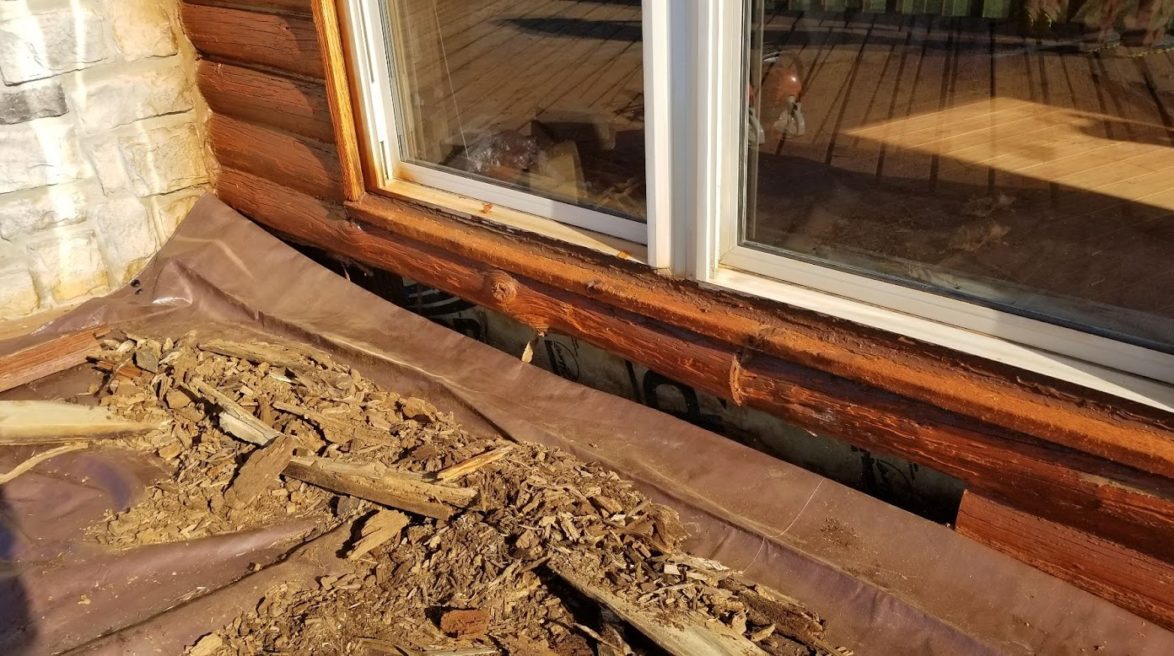
Step 1
Tarps are placed below the rot to catch debris for easy removal.
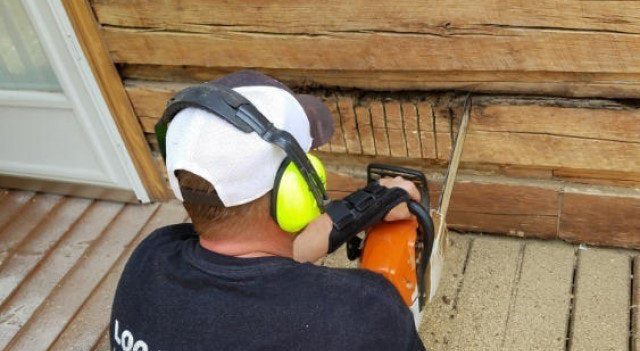
Step 2
Chainsaws are used to remove the log surface, penetrating halfway through the log in 2- to 3-inch increments where log rot is present.

Step 3
Rotted areas are chipped out using hand tools.

Step 4
The surface is chipped away after the rotted areas are removed, leaving behind a flat surface where the replacement log is installed with 5-inch wood screws or lag screws.

Step 5
Install backer rod or grip strip as need to fill log gaps over a quarter inch.
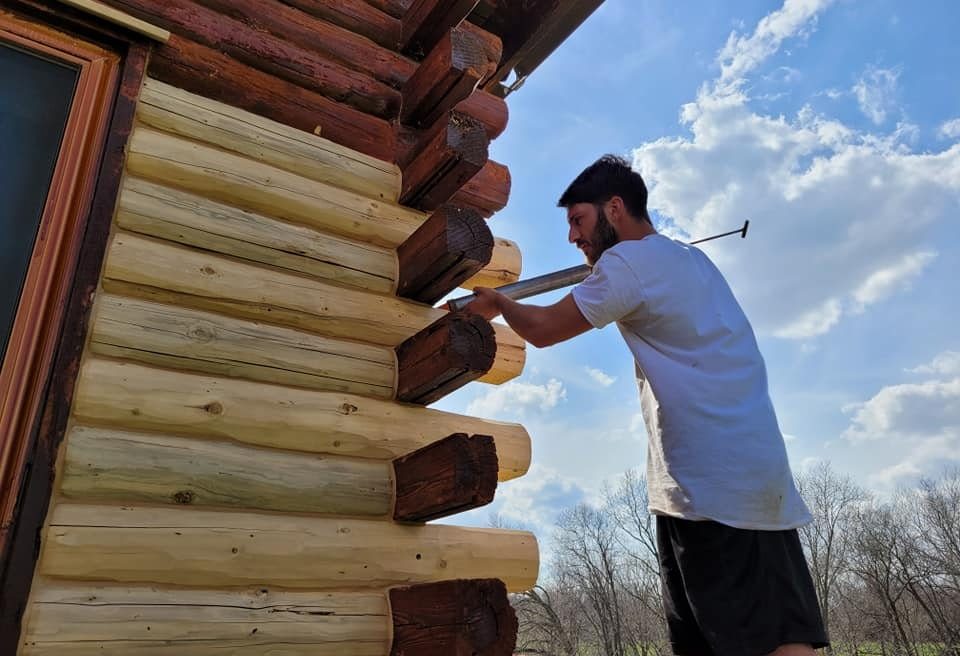
Step 6
Perform chinking or caulking work to seal the edges around the replacement log.
Scroll through steps
Full-Log Replacement
If more than half the log is rotted, we recommend a full-log replacement for best results.
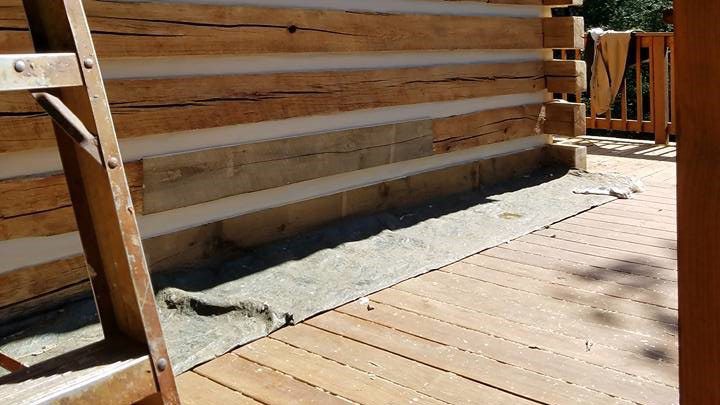
Step 1
Again, tarps are placed below the rot to catch debris and damaged wood.
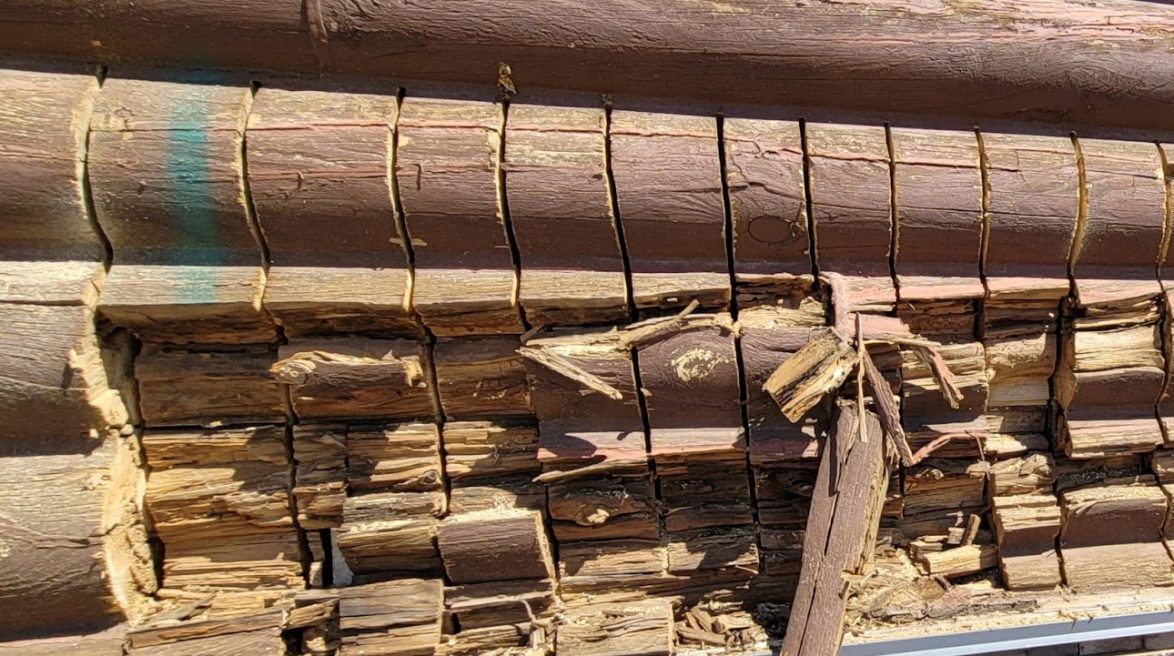
Step 2
If needed, temporary support beams will be installed to maintain the home’s structural integrity.
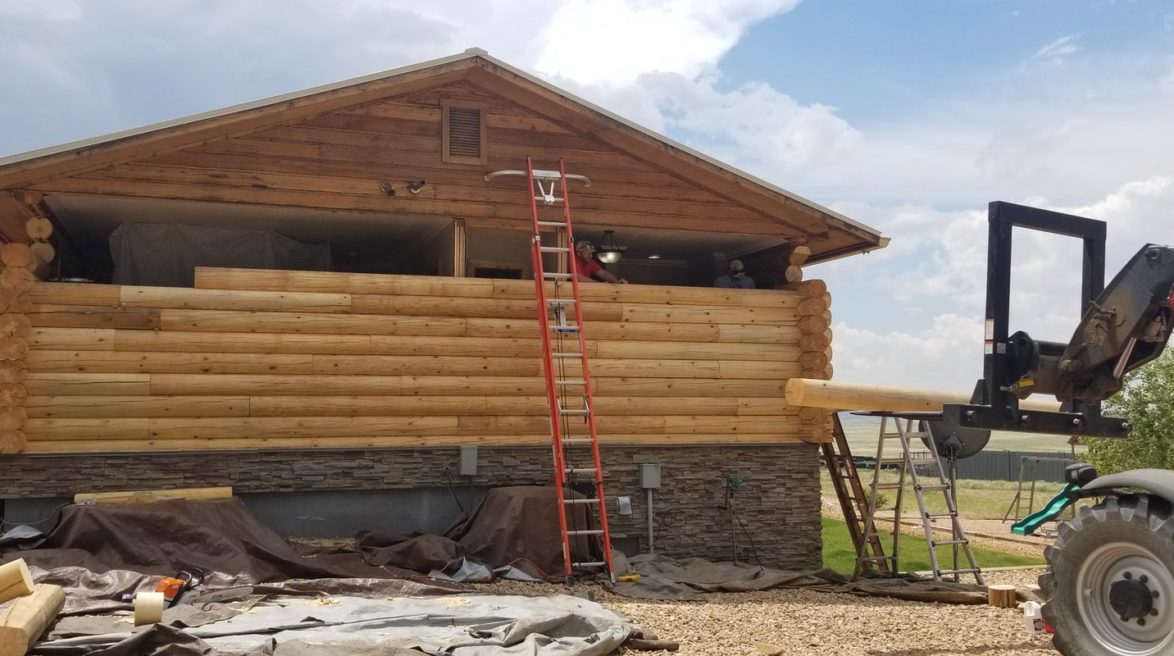
Step 3
Chainsaws are used to carefully cut the rotted logs into manageable sections for removal.

Step 4
New logs are cut to fit and then installed and secured with Timberlok lag screws, which are hidden as much as possible.
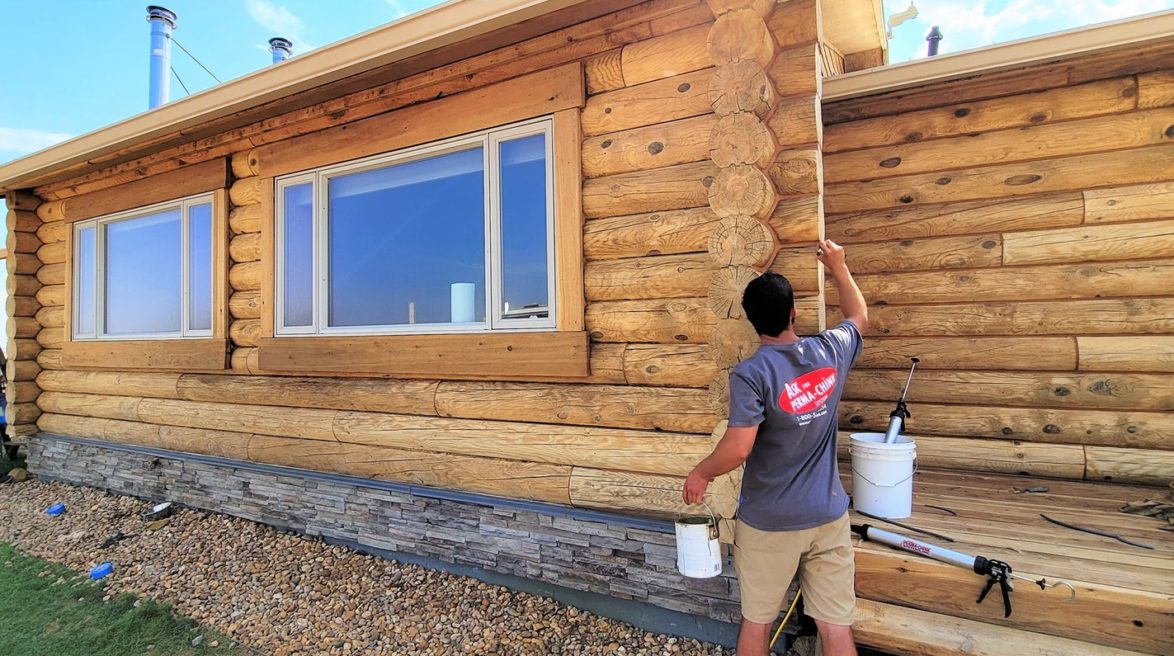
Step 5
Perform chinking or caulking work to seal the edges around the replacement log and prep the surface for staining.
Scroll through steps
Free Estimate
Do You Need to Repair or Replace Logs on Your Home?
If log rot is visible on your home or the skewer test turned up spots that likely need to be repaired or replaced, give us a call at 844-567-2329. Our team will make an appointment to come out and assess the damage to determine if you need half- or full-log replacement. In some cases, homes only need minor log repairs where we remove rotted fibers, apply epoxy and use a wood filler.
Again, each log cabin is different. We can’t draw up an estimate for log repair or replacement services until we have all the necessary information. That includes type of logs used, extent of the log rot and a clearer idea of the recommended repairs. Whatever you do, don’t ignore signs of log rot. The longer it goes, the more extensive—and expensive—the repairs will be.
Log Repair Replacement Application
Other Services
Learn About Our Other Services
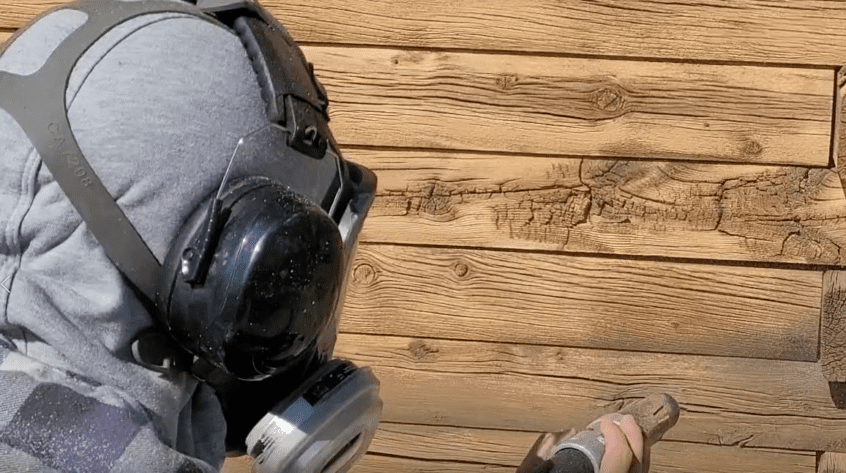
Media Blasting
Log Masters Restorations uses a high-pressure media blaster that shoots recycled glass through a hose to remove paint and wood stain.
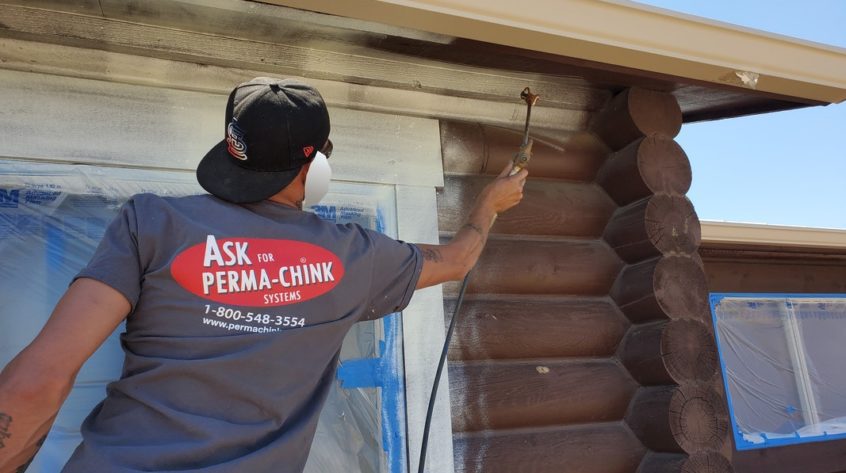
Chemical Stripping
Our finish remover reaches into wood pores to release paint or other film-building products and is then washed off to expose natural wood.

Sanding
Sanding is a must after chemical stripping and might be needed after media blasting or pressure washing to remove any problem areas.
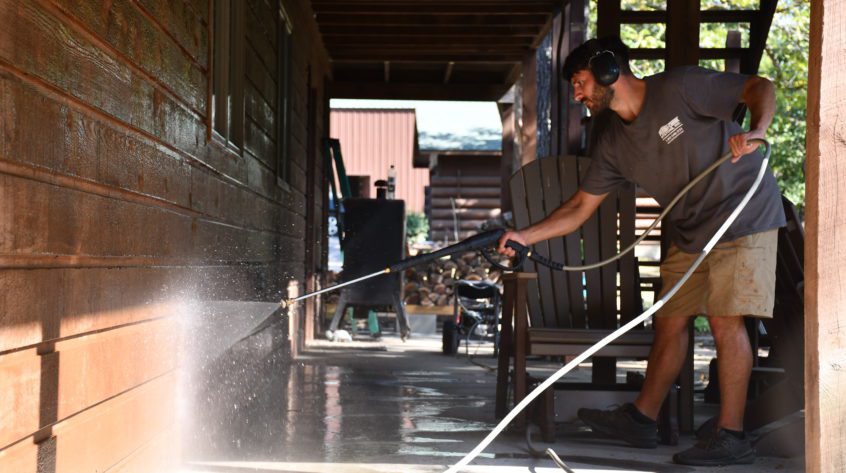
Pressure Washing & Cleaning
Dirt and grime on logs can be tough to remove. Pressure washing is used to clean log homes and wash away chemical stripping agents.
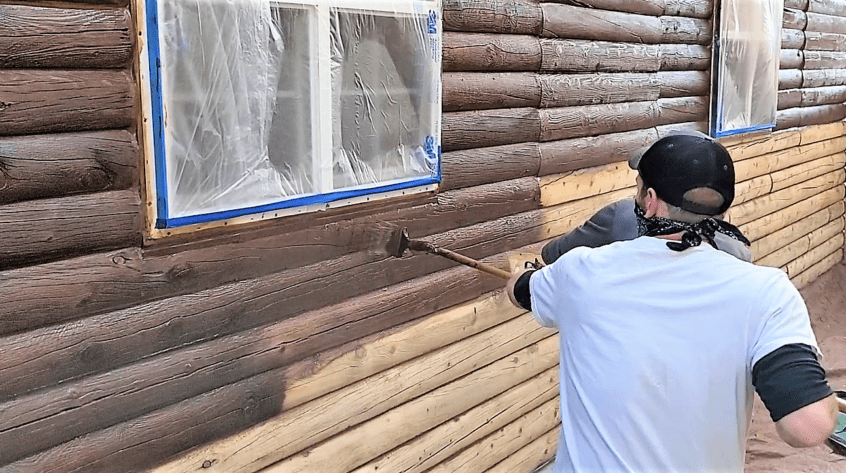
Staining
Staining protects your log home from the environment. Our water-based stain and oil-penetrating stains come in a variety of colors.

Caulking
Caulking seals the gaps in your log home joinery and is commonly used for homes with smaller logs or around windows and doors.

Chinking
Chinking is a sealant that looks great great on large round or beam-style log homes that can be added to caulking to create a tighter seal.
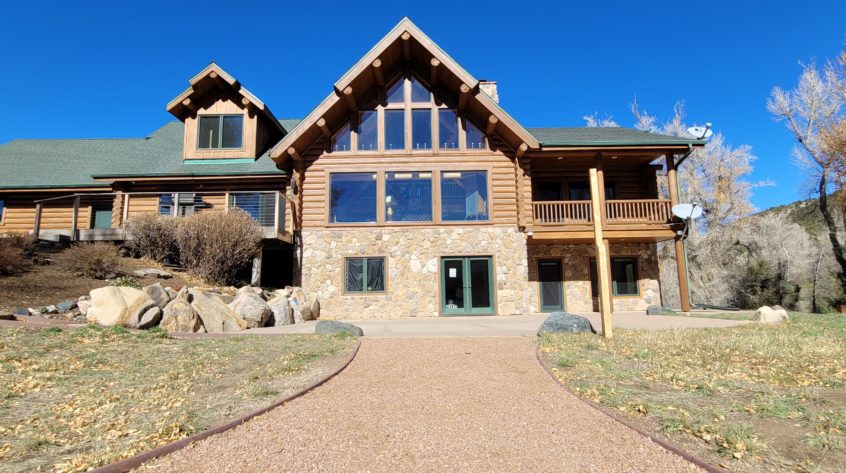
Log Home Maintenance
Log Masters offers an array of routine maintenance services like sealing and preservation to keep your log home in good condition.
Scroll through services
